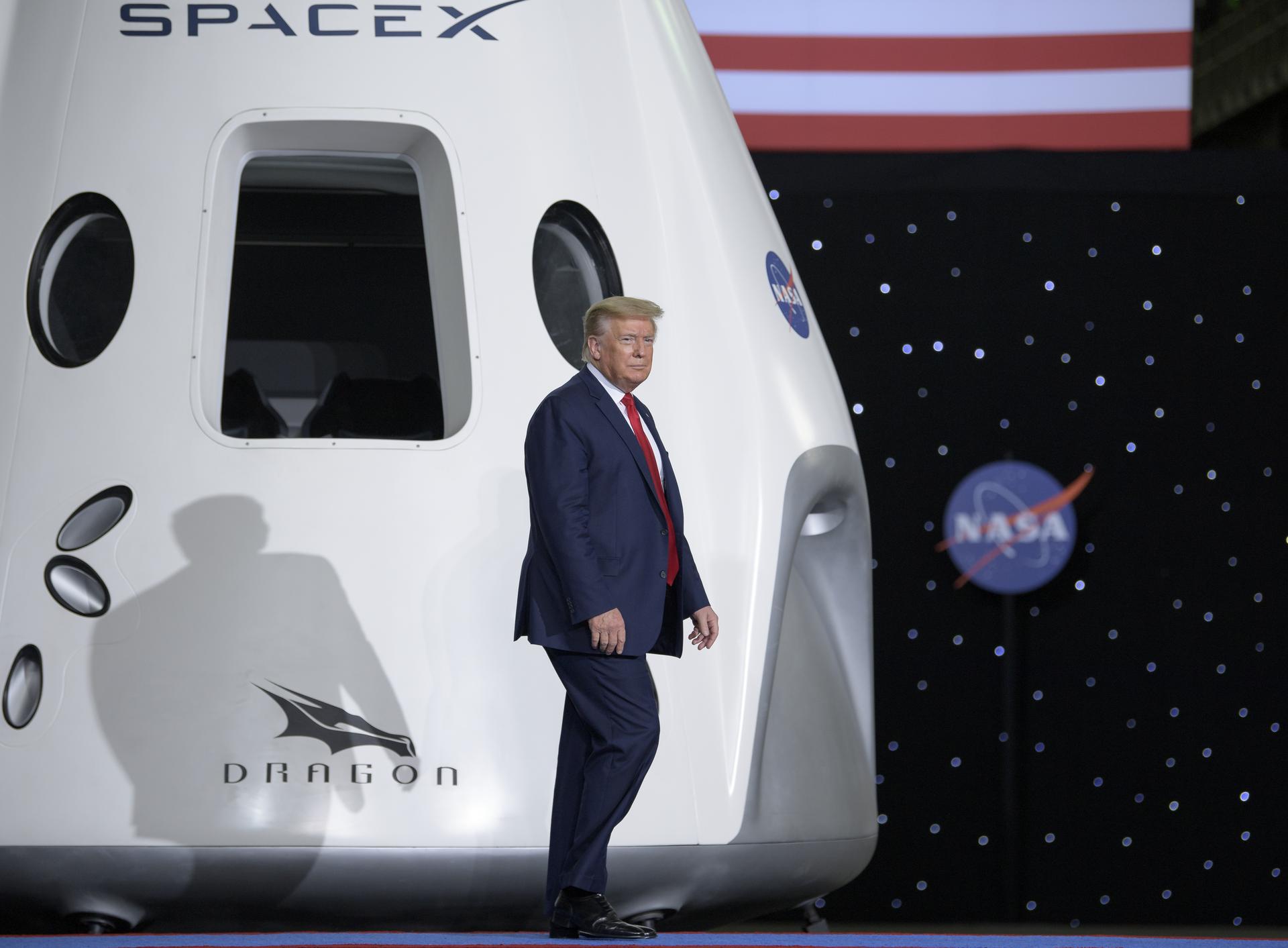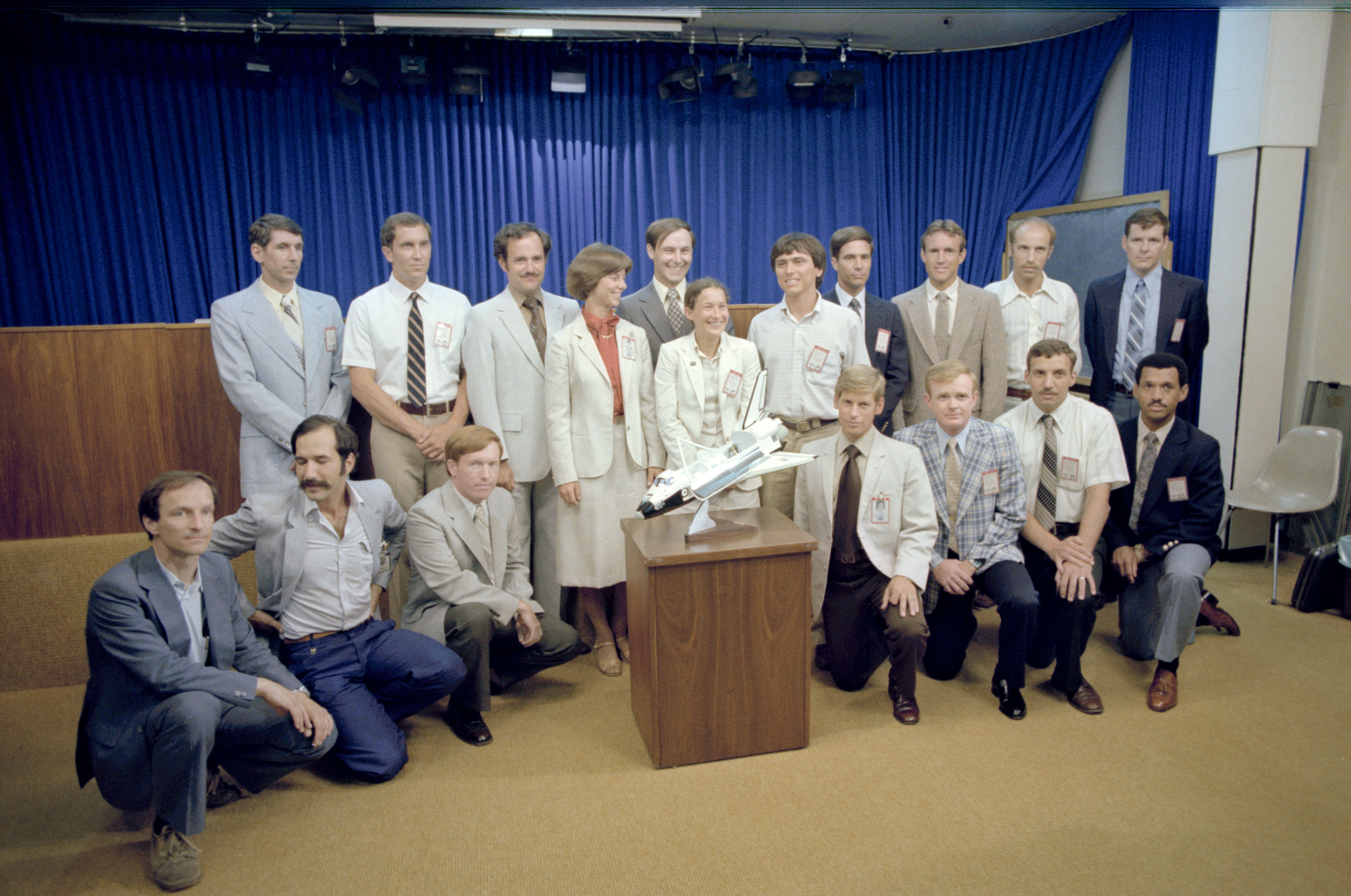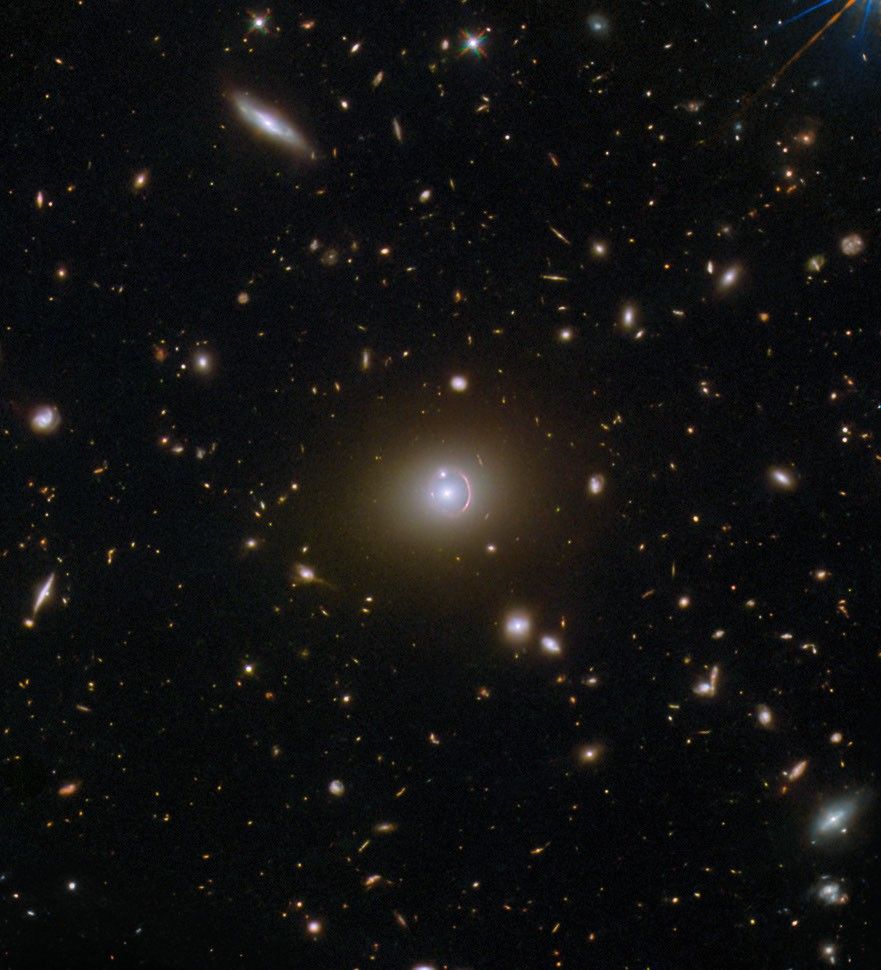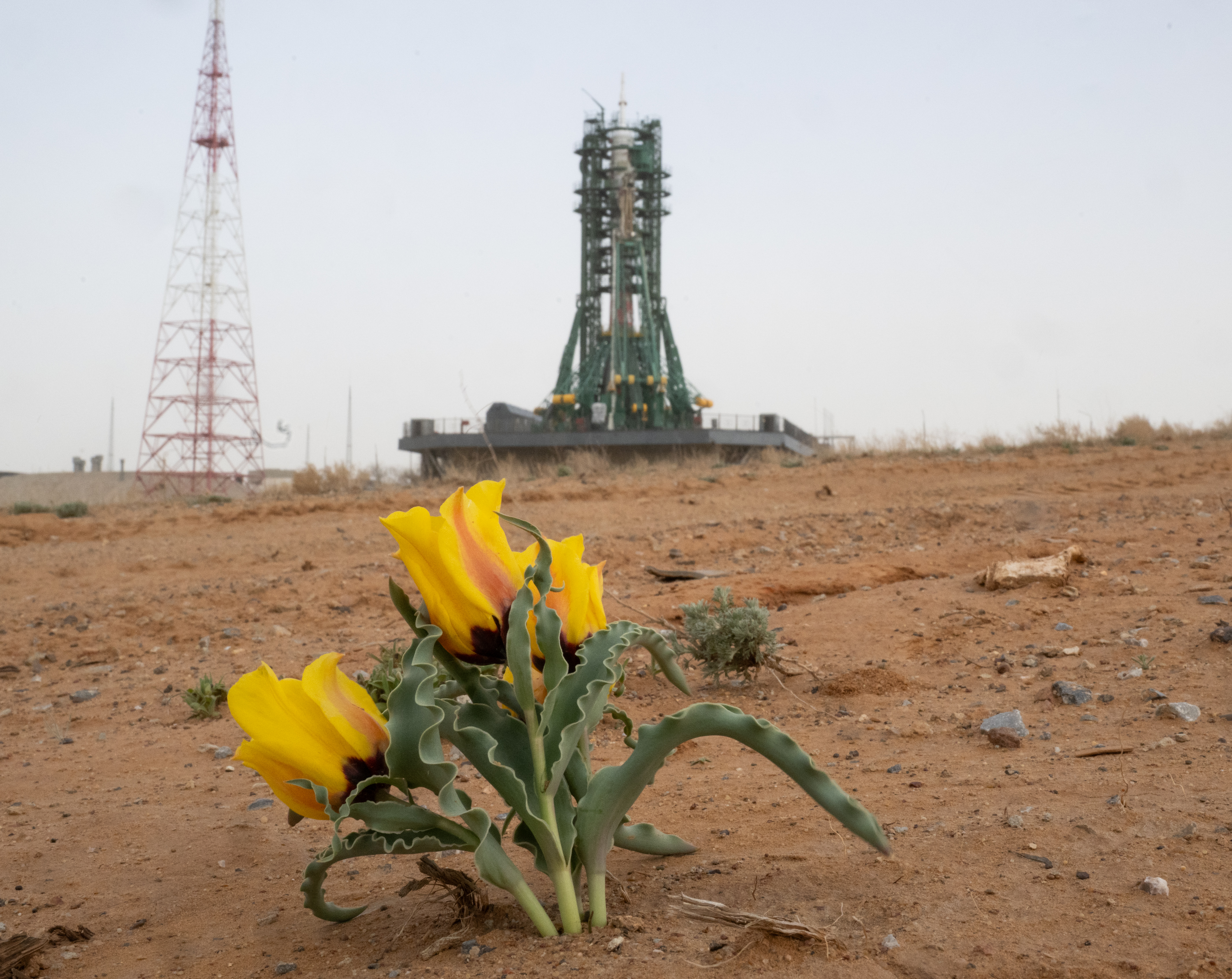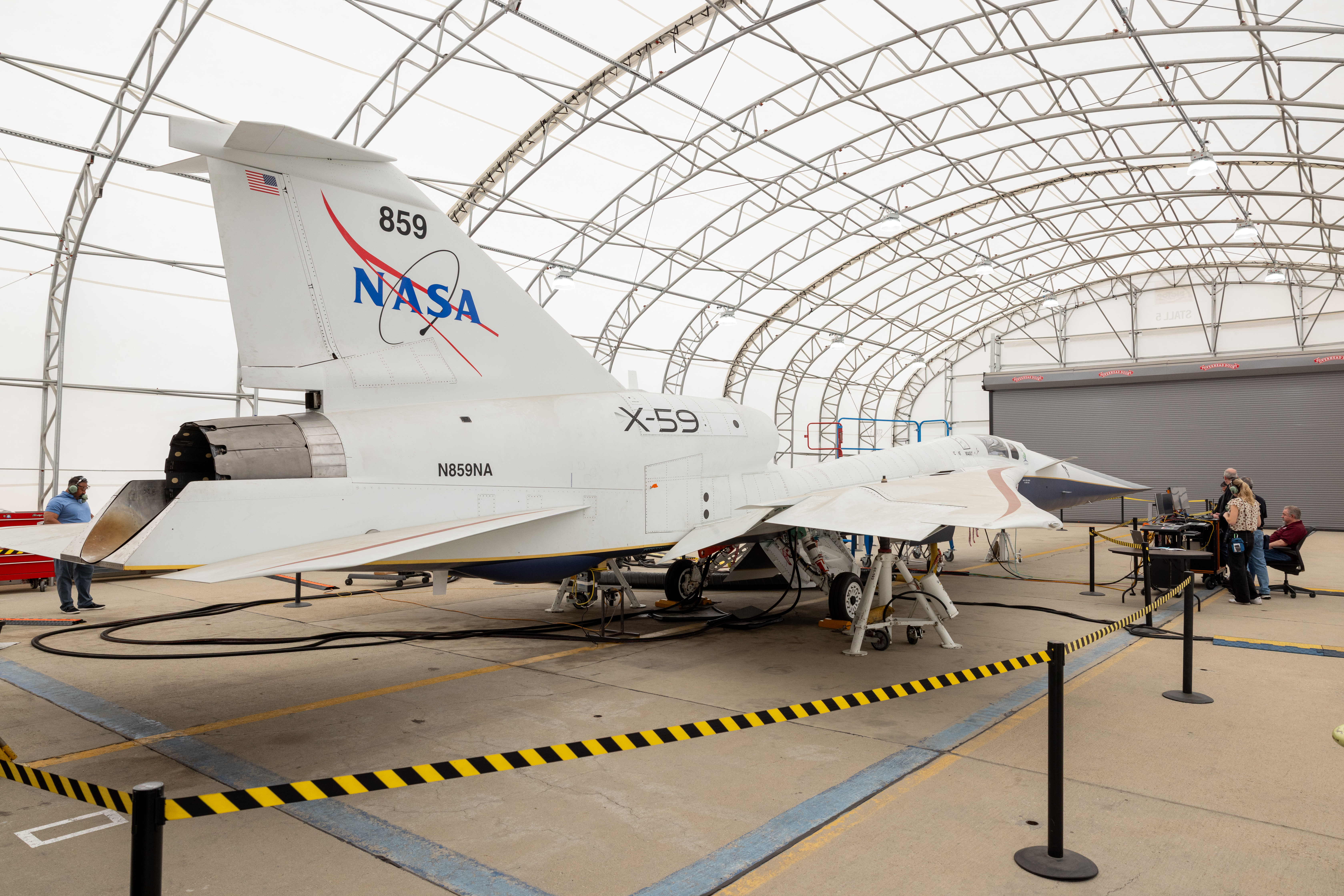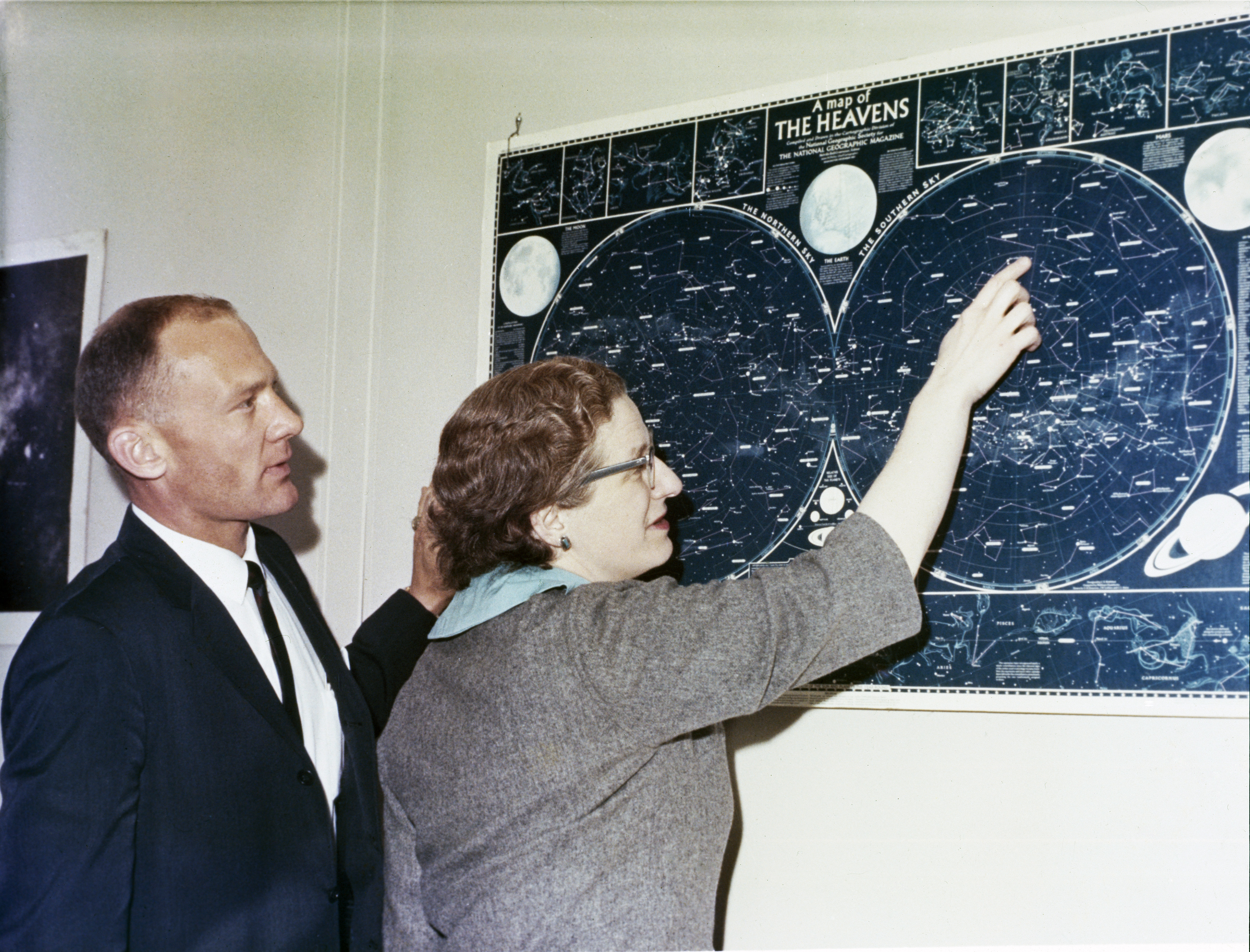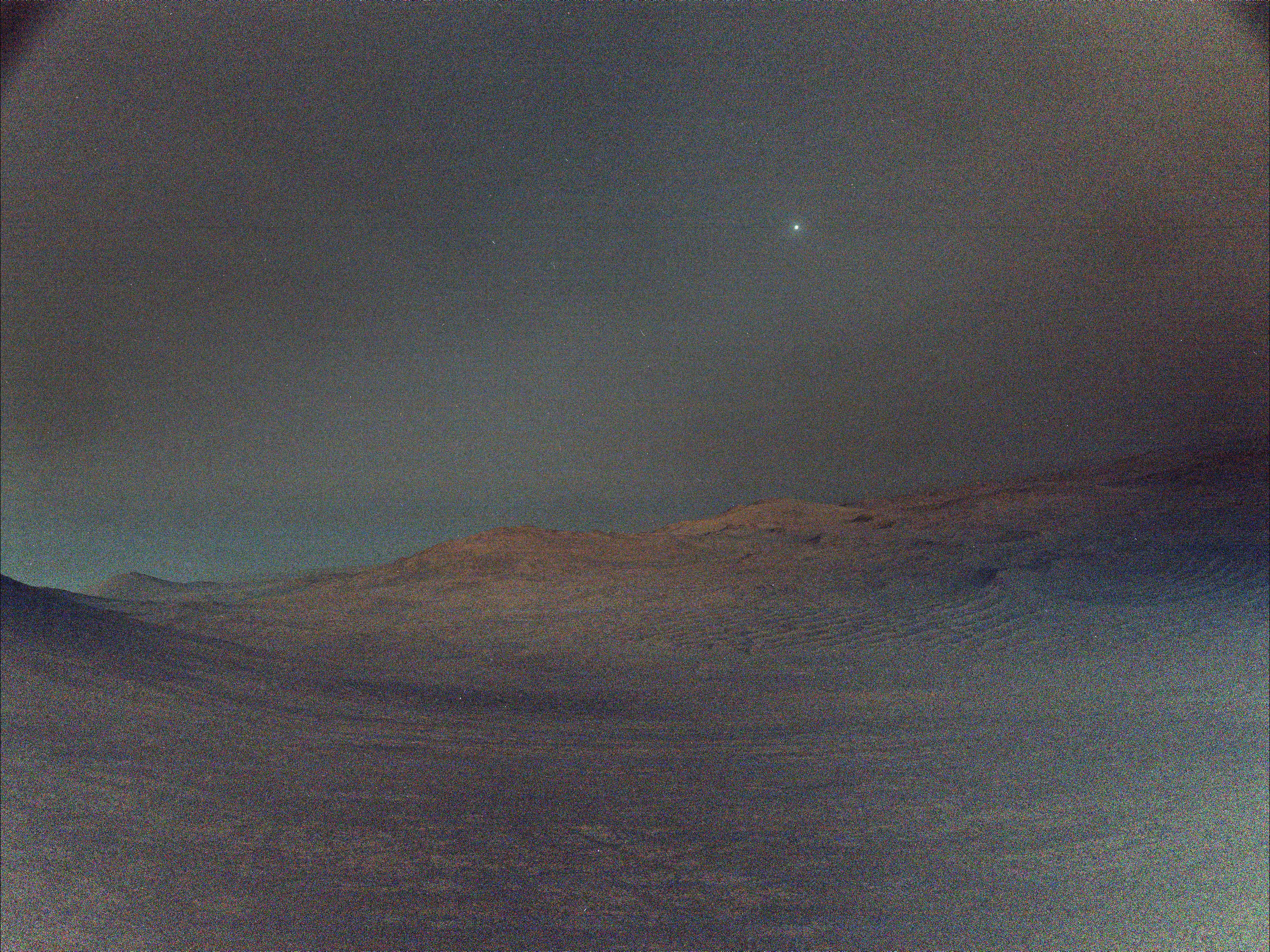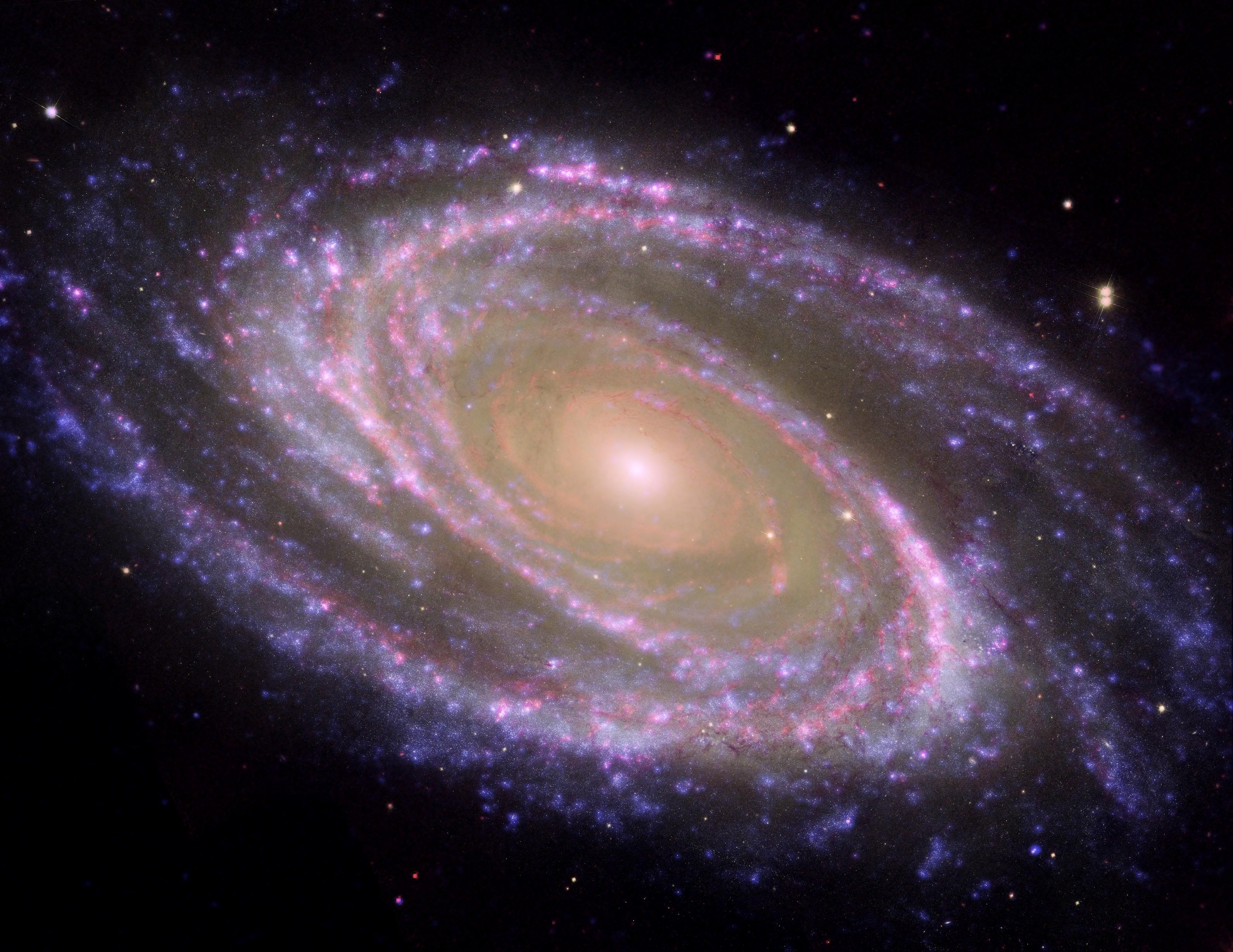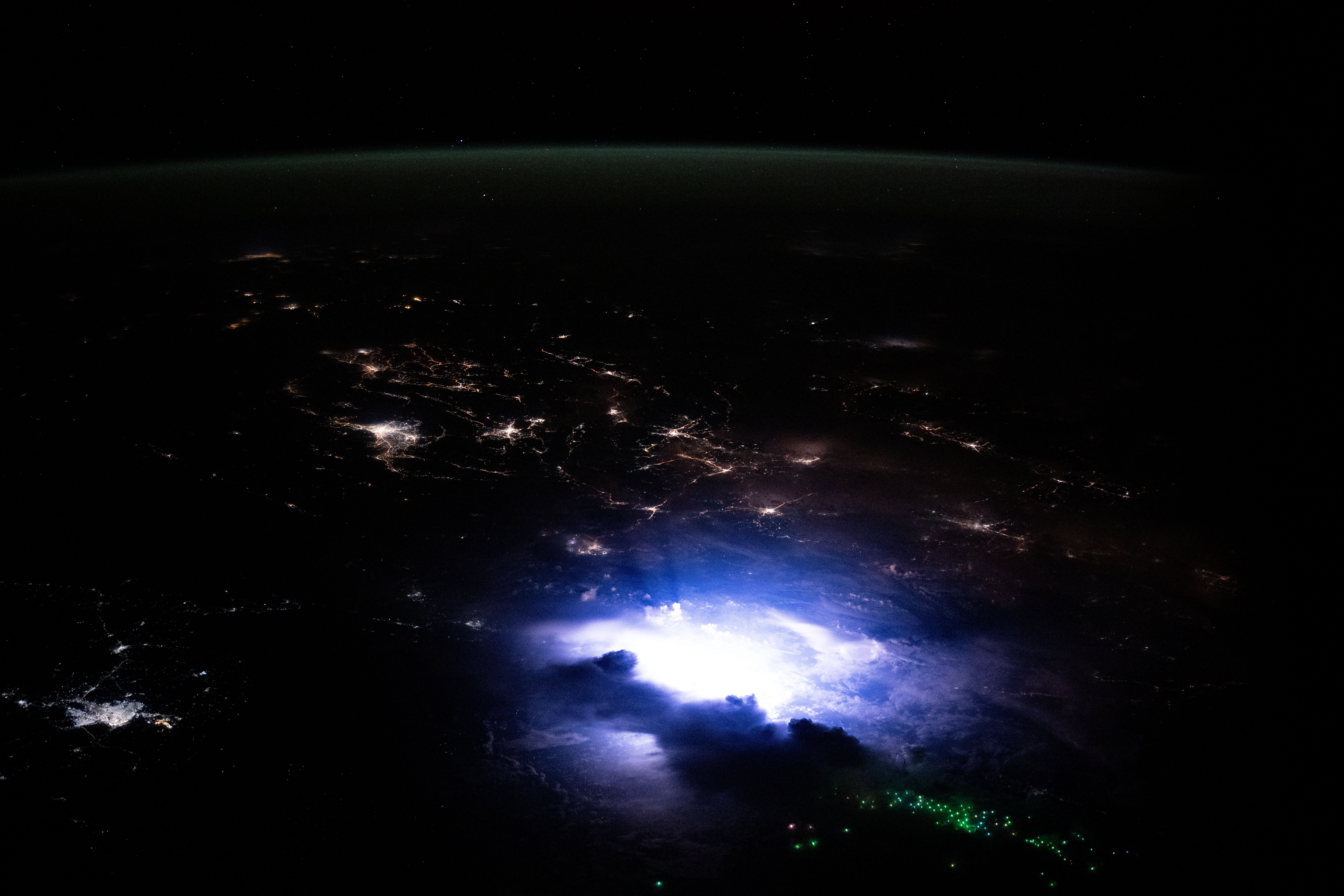President Donald Trump steps onstage to speak following the launch of a SpaceX Falcon 9 rocket carrying the company's Crew Dragon spacecraft on NASA’s SpaceX Demo-2 mission with NASA astronauts Robert Behnken and Douglas Hurley aboard, Saturday, May 30, 2020, at NASA’s Kennedy Space Center in Florida...
Sixteen of 19 astronaut candidates named on May 29, 1980, and two European trainees as payload specialists pose for photographers in the briefing room in the public affairs facility at NASA's Johnson Space Center in Houston...
This NASA/ESA Hubble Space Telescope image features the remote galaxy HerS 020941.1+001557, which appears as a red arc that partially encircles a foreground elliptical galaxy...
The waning gibbous moon sets behind a flag at NASA’s Michoud Assembly Facility in New Orleans just after sunrise on Wednesday, March 19, 2025...
A flower is seen in the foreground with a Soyuz rocket on the launch pad at the Baikonur Cosmodrome in Kazakhstan on April 7, 2025. Expedition 73 crewmembers including NASA astronaut Jonny Kim launched aboard their Soyuz MS-27 spacecraft on April 8...
NASA’s X-59 quiet supersonic research aircraft is seen during its “aluminum bird” systems testing at Lockheed Martin’s Skunk Works facility in Palmdale, California. The test verified how the aircraft’s hardware and software work together, responding to pilot inputs and handling injected system failures...
On May 19th, 2005, NASA's Mars Exploration Rover Spirit captured this stunning view as the Sun sank below the rim of Gusev crater on Mars. This panoramic camera mosaic was taken around 6:07 in the evening of the rover's 489th Martian day, or sol...
Webb has found crystalline water ice in a debris disk around a young, Sun-like star called HD 181327. Based on its presence in our own solar system, scientists have expected to see it in other star systems — but haven't had sensitive enough instruments to provide definitive proof until now...
Dr. Nancy Grace Roman, NASA's first Chief of Astronomy, briefs Astronaut Edwin "Buzz" Aldrin on celestial objects in 1965 in Washington, D.C...
NASA's Perseverance rover captured this view of Deimos, the smaller of Mars' two moons, shining in the sky at 4:27 a.m. local time on March 1, 2025, the 1,433rd Martian day, or sol, of the mission...
The perfectly picturesque spiral galaxy known as Messier 81, or M81, looks sharp in this composite from NASA's Spitzer and Hubble Space Telescopes and NASA's Galaxy Evolution Explorer...
Astronaut Don Pettit took this nighttime photo while the International Space Station orbited near the Andaman Sea in Southeast Asia...
